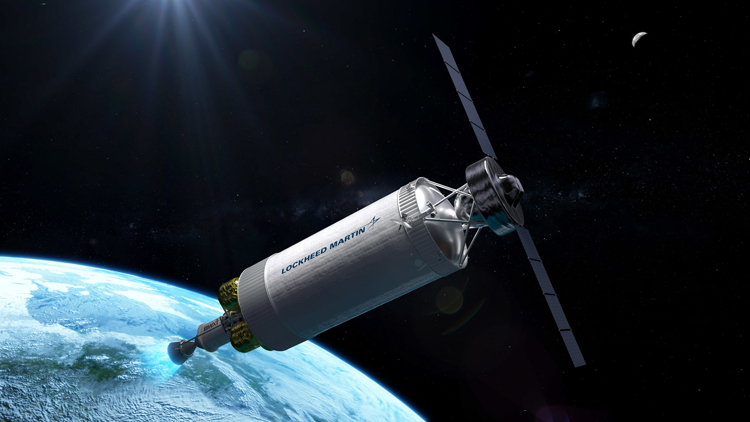INDIAN ARMED FORCES CHIEFS ON
OUR RELENTLESS AND FOCUSED PUBLISHING EFFORTS

SP Guide Publications puts forth a well compiled articulation of issues, pursuits and accomplishments of the Indian Army, over the years

I am confident that SP Guide Publications would continue to inform, inspire and influence.

My compliments to SP Guide Publications for informative and credible reportage on contemporary aerospace issues over the past six decades.
Lockheed Martin Selected to Develop Nuclear-Powered Spacecraft
DARPA and NASA's Joint DRACO Project Technology Will Help Enable Humans to Travel to Mars

Lockheed Martin has won a contract from the Defense Advanced Research Projects Agency (DARPA) to develop and demonstrate a nuclear-powered spacecraft under a project called Demonstration Rocket for Agile Cislunar Operations (DRACO). The project will represent a rapid advancement in propulsion technology to benefit exploration and national defense.
DARPA partnered with NASA's Space Technology Mission Directorate on the DRACO project, as both agencies will benefit from this leading edge technology. The in-space flight demonstration of a nuclear thermal rocket engine vehicle will take place no later than 2027.
Faster, Farther, More Agile
Chemical propulsion engines have long been the standard for spaceflight, but for humans to travel to Mars, they will need much more powerful and efficient propulsion. Nuclear thermal propulsion (NTP) engines offer thrust as high as conventional chemical propulsion with two-to-five times higher efficiency, which means the spacecraft can travel faster and farther and can significantly reduce propellant needs. They also enable abort scenarios on journeys to Mars that are not possible with chemical propulsion systems.
"These more powerful and efficient nuclear thermal propulsion systems can provide faster transit times between destinations. Reducing transit time is vital for human missions to Mars to limit a crew's exposure to radiation," said Kirk Shireman, vice president of Lunar Exploration Campaigns at Lockheed Martin Space. "This is a prime technology that can be used to transport humans and materials to the Moon. A safe, reusable nuclear tug spacecraft would revolutionize cislunar operations. With more speed, agility and maneuverability, nuclear thermal propulsion also has many national security applications for cislunar space."
Safe and Efficient Nuclear Tech
An NTP system uses a nuclear reactor to quickly heat hydrogen propellant to very high temperatures and then funnels that gas through the engine nozzle to create powerful thrust. The fission-based reactor will use a special high-assay low-enriched uranium, or HALEU, to convert the cryogenic hydrogen into an extremely hot pressurized gas. The reactor will not be turned on until the spacecraft has reached a nuclear safe orbit, making the NTP system very safe.
Lockheed Martin has partnered with BWX Technologies to develop the nuclear reactor and produce the HALEU fuel.
"In the past several years, BWXT has been maturing its nuclear thermal propulsion fuel and design, and we are excited to further expand into space with our ability to deliver nuclear products and capabilities to the U.S. Government, " said Joe Miller, BWXT Advanced Technologies LLC president. "We look forward to building the reactor and manufacturing the fuel at our Lynchburg, Virginia, facilities."
While nuclear systems are an emerging field, Lockheed Martin has a long history and expertise in nuclear controls and has built many of NASA's radioisotope thermoelectric generators for NASA's planetary missions. Lockheed Martin has also invested heavily in cryogenic hydrogen storage and transfer. This key technology will be needed in deep space exploration not only for NTP, but for conventional propulsion systems.
- Illustrations: https://www.flickr.com/photos/lockheedmartin/sets/72177720310050928
- Animations: https://vimeo.com/manage/videos/829198706/45f0fd0981
- YouTube video: https://www.youtube.com/watch?v=LSIlLUKiiGE





